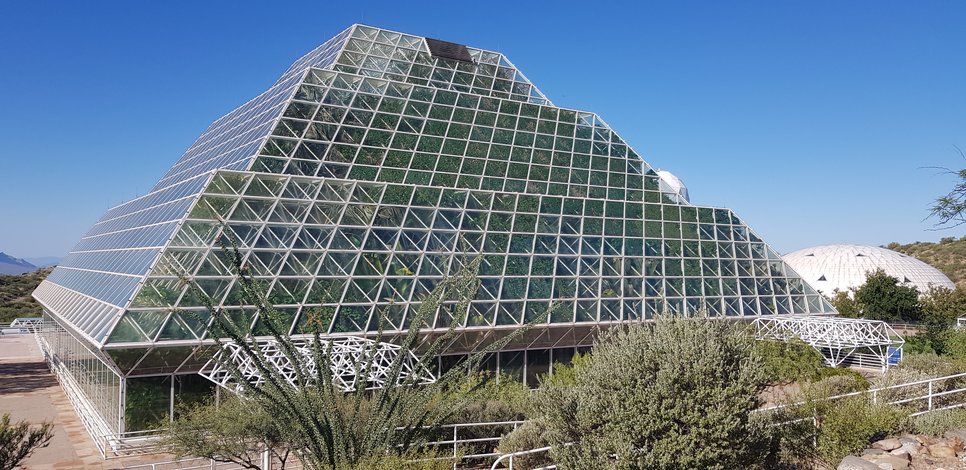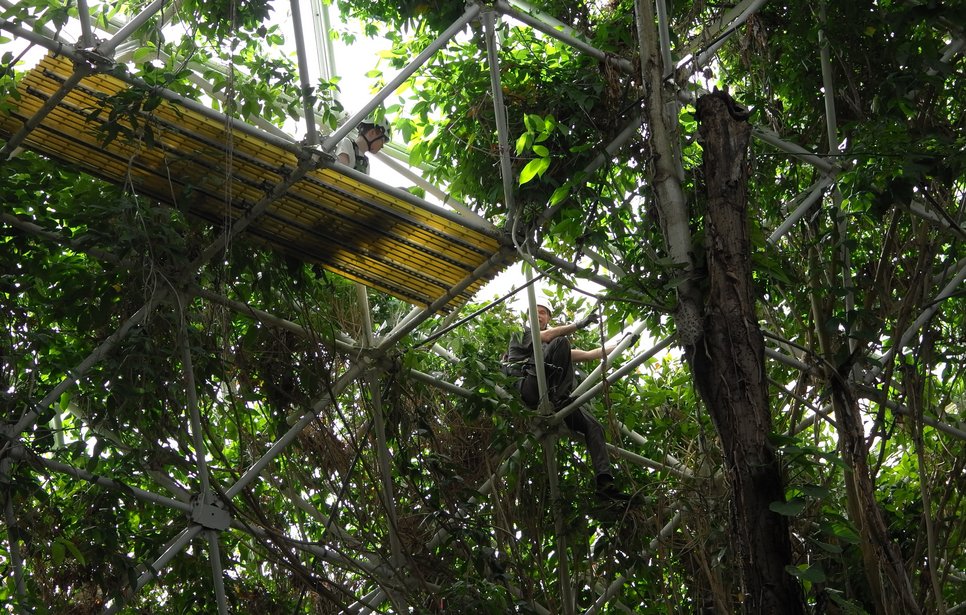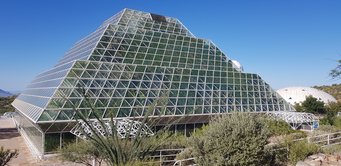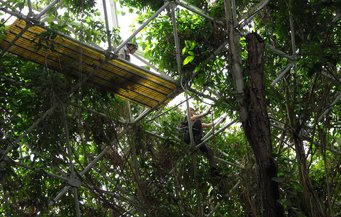The diversity of plants’ water use strategies makes forests resilient to extreme drought
In Biosphere 2 researchers undertook the largest tracer experiment to date on how H2O, CO2 and VOCs flow through drought-stressed plants and soil
Press release of the Albert Ludwigs Uniuversity Freiburg with MPIC addition
• Results of this study may help make forests more resilient and refine climate models
• Large interdisciplinary team of 80 researchers involved, Max Planck researchers determined emissions of volatile organic compounds

Precisely how does a forest system and the individual plants within it react to extreme drought? Understanding the processes involved is crucial to making forests more resilient in the increasingly dry climate that will result from climate change, and also important for refining climate models. A research team led by Prof. Dr. Christiane Werner from the University of Freiburg has conducted the most extensive experiment to date into this subject using stable isotopes to trace flows of water and carbon through a forest. To do this they exposed an enclosed, experimental rainforest to a drought lasting 9.5 weeks and observed the specific strategies of different plants to cope with drought and their interactions with other plants, the soil and the atmosphere. The integrated measurements revealed a complex interplay among trees and plants with differed adaptations to drought, which was crucial for maintaining the stability of the entire forest system for as long as possible. In addition, the experiment provided insights about how drought affects carbon storage within forests and how gas emissions from drought-stressed plants can influence the atmosphere and the climate.
Coordinated with Dr. Nemiah Ladd (University of Freiburg) and Dr. Laura Meredith (University of Arizona), the experiment took place in the US Research Center Biosphere 2. The international and interdisciplinary team included 80 scientists.
With their experiment the researchers identified four groups of plants with different responses to the imposed drought: drought-tolerant and drought-sensitive canopy-forming trees, and drought-tolerant and drought-sensitive understory plants.

“We observed one of the most astonishing dynamics between the large drought-sensitive and drought-tolerant trees,” explains Christiane Werner. Sensitive trees are the ones that generally take up most water, especially from the topsoil. As topsoil is also fastest to dry out, these trees began to suffer sooner and had the most intensive water deficiency. The previous assumption was that they would switch to taking up water from deep in the soil, to maintain their high consumption rate. “But instead,” Werner says, “they restricted their water consumption drastically and only drew on the deep soil reservoirs under very extreme drought. So they preserved the deep reservoirs for as long as possible, allowing it to still be available for drought-tolerant trees.” And those drought-tolerant trees in turn, because of their naturally lower water flow, retained their leaf canopy for longer, which then preserved the moisture in the understory longer. The protection for the understory helps to counter dry-out the topsoil, on which drought-sensitive trees massively depend. Overall this complex interaction retains the water in the entire system for longer and thereby keeps it stable for longer.
“This reveals,” Werner says, “that plants can develop different and at the same time complementary hydraulic strategies in a forest system – and with this interaction boost the resilience of the entire forest to drought. By learning more precise details we can make a substantial contribution to helping forests be more resilient to climate-related drought.”
The researchers studied the flows of H2O, CO2 and volatile organic compounds (VOCs), such as isoprene and monoterpenes, to obtain their results. To do this, they fed labeled 13CO2 and 2H2O into Biosphere 2 and then tracked how these substances were partitioned between the trees, understory plants and soil over the course of the experiment. In this way the scientists observed, among other things, the intensity of water consumption and flow rate in the plants, the regions of the soil from which they drew water and at what times, and how CO2 and VOCs were stored in the plants and soil or emitted into the atmosphere. This was the first time such a tracer experiment has been carried out in an entire forest, something that is only possible within the contained system at Biosphere 2.
When looking at the storage and emission of CO2 and VOCs, the researchers noted among other things that the forest’s carbon storage reduced by about 70 percent, and as drought stress increased the plants emitted more VOCs, which can lead to the formation of ozone and other gases through interactions in the atmosphere. In addition, there was a cascade of emissions of various VOCs, such as isoprene, monoterpenes and hexanal, reflecting the increasing drought stress. Monoterpenes in particular can promote the condensation of clouds and thus lead to rain, probably acting as another protective mechanism against drought.
The VOC emissions were determined in part by the team of Jonathan Williams from the Max Planck Institute for Chemistry. Although an atmospheric chemist himself, Williams found it also helpful that air chemistry was absent from the Biosphere 2 so the biological response could be assessed in isolation. He states: "We were able to measure the drought stress-related biological changes and the emissions of the plants without additional variable influences which exist in the rainforest, for example through sudden rainfall or biomass combustion." Climate models predict that the Amazon rainforest will experience more intense droughts in future. The fact that the examined ecosystem has diverse water use strategies and is therefore more resilient than initially assumed makes Williams cautiously optimistic about the natural rainforest. However, the protection of the forest is top priority.
“All these findings are also important to climate research,” says Christiane Werner. “What water usage strategies plants deploy against drought and how this involves them in interactions with other plants, with the soil and the atmosphere – all this can make modeling-based studies of climate change more precise in future,” says Christiane Werner.
The international and interdisciplinary research team includes many specialists including hydrologists, ecophysiologists, microbiologists, ecologists and atmospheric researchers. “This breadth of expertise has, among other things, allowed us to have a better understanding of the changes in processes at the microscopic level, such as molecular processes in cells and microbes, right up to ecosystem scale processes that influence the composition of the atmosphere,” says Werner. The research is part of her ERC Consolidator project and also received significant funding from the Philecology Foundation at B2.

